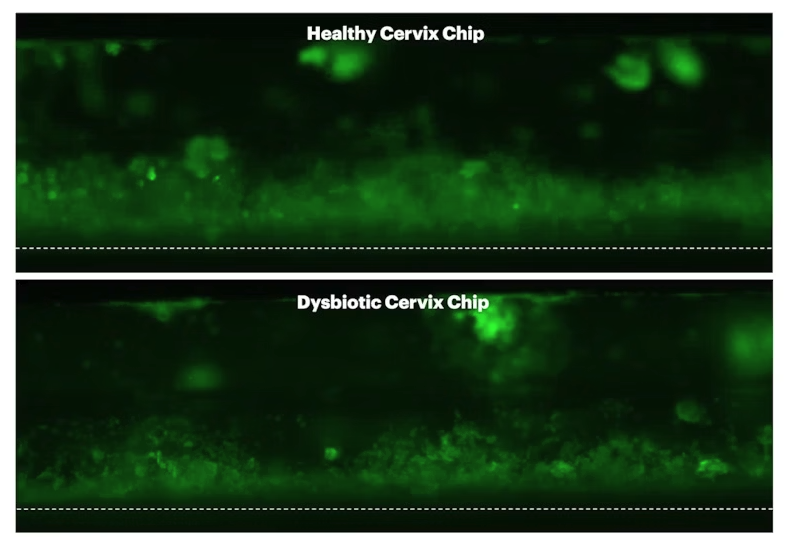
Researchers from the Wyss Institute for Biologically Inspired Engineering at Harvard University and the University of California Davis have developed a human Cervix-on-a-Chip. This model accurately mimics the complex cervical tissue and addresses the limitations of current animal and in vitro models, enhancing the study of bacterial vaginosis (BV) and fostering the development of more effective treatments.
Bacterial Vaginosis affects over 25% of reproductive-aged women, causing discomfort and increasing the risk of severe complications such as HIV infection, spontaneous abortion, pre-term birth, and pelvic inflammatory diseases. Current treatments primarily rely on antibiotics, which often fail to eradicate the bacteria and prevent recurrence in more than 60% of cases. Despite being first described over a century ago, the pathogenic events following BV infection are still poorly understood, hindering the development of more effective treatments.
Led by Wyss Founding Director Donald Ingber, M.D., Ph.D., the research team developed the Cervix-on-a-Chip to replicate the interactions between cervical epithelial cells, the protective mucus layer, and the cervical microbiome. Their findings were published in Nature Communications. The microfluidic device, the size of a USB memory stick, consists of two parallel channels separated by a porous membrane. This design allows the two cell types, cervical epithelial cells and cervical fibroblast cells, to communicate similarly to how they do in the human body.
The device was able to replicate the cervix’s mucus production, its response to sex hormones, and the interactions with both healthy and pathogenic microbial communities. “Our engineered cervix model and the breadth and depth of analysis it allows set a new standard in research that is well in line with existing clinical observations, while offering first new insights into cervix functionality and vulnerability,” said first author Zohreh Izadifar, Ph.D., now a Research Faculty member at Boston Children’s Hospital and Harvard Medical School.
The study’s success marks another milestone towards the goals of the Bill and Melinda Gates Foundation, which funded the project. The foundation identified BV in African women as a high-priority area due to its severe health implications. The Cervix Chip, in conjunction with the previously developed Vagina Chip, provides a powerful platform for evaluating potential new treatments, including live biotherapeutic products being developed by consortium members funded by the Gates Foundation.
“In this study, we leveraged critical findings that we had made in a previously developed Vagina Chip to create a platform that now enables researchers to find answers to additional long-standing questions in women’s health,” said Ingber. “We also hope to use the chip to identify new treatments for other infectious diseases of the female reproductive tract.”
The Cervix-on-a-Chip technology mimicked the two major sections of the cervical canal: the ectocervix and the endocervix. It accurately replicated the distinct mechanical cues and fluid flow conditions of each section. The mucus produced by the chip under different hormonal conditions closely resembled that found in women, responding to sex hormone concentrations typical of the menstrual cycle. “All of these findings closely reflect cervix physiology described from clinical observations,” said Izadifar.
To simulate healthy and pathological conditions, the researchers populated the Cervix Chip with different bacterial species. The presence of Lactobacillus crispatus, which dominates healthy cervical microbiomes, maintained the integrity of the mucus layer and the epithelium. In contrast, Gardnerella vaginalis, associated with dysbiosis, compromised the epithelium’s barrier functions and altered the mucus layer, leading to inflammation. “Interestingly, we identified specific mucus structural and sugar modifications that could help explain the deterioration of the mucus’s quality related to BV, and indirectly could have an impact on downstream pathological processes,” said Izadifar.
The Cervix-on-a-Chip provides a valuable tool for comprehensively investigating the cervix’s role in various pathologies and for developing new treatments for BV and other infectious diseases of the female reproductive tract.



